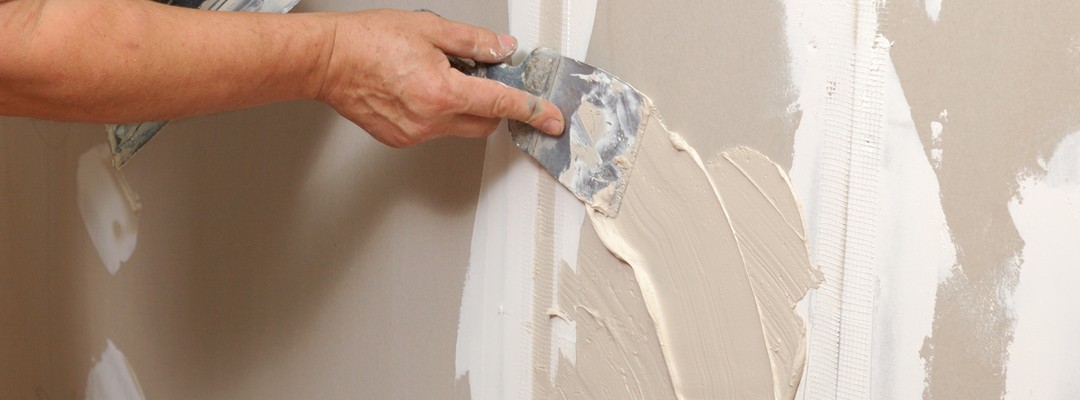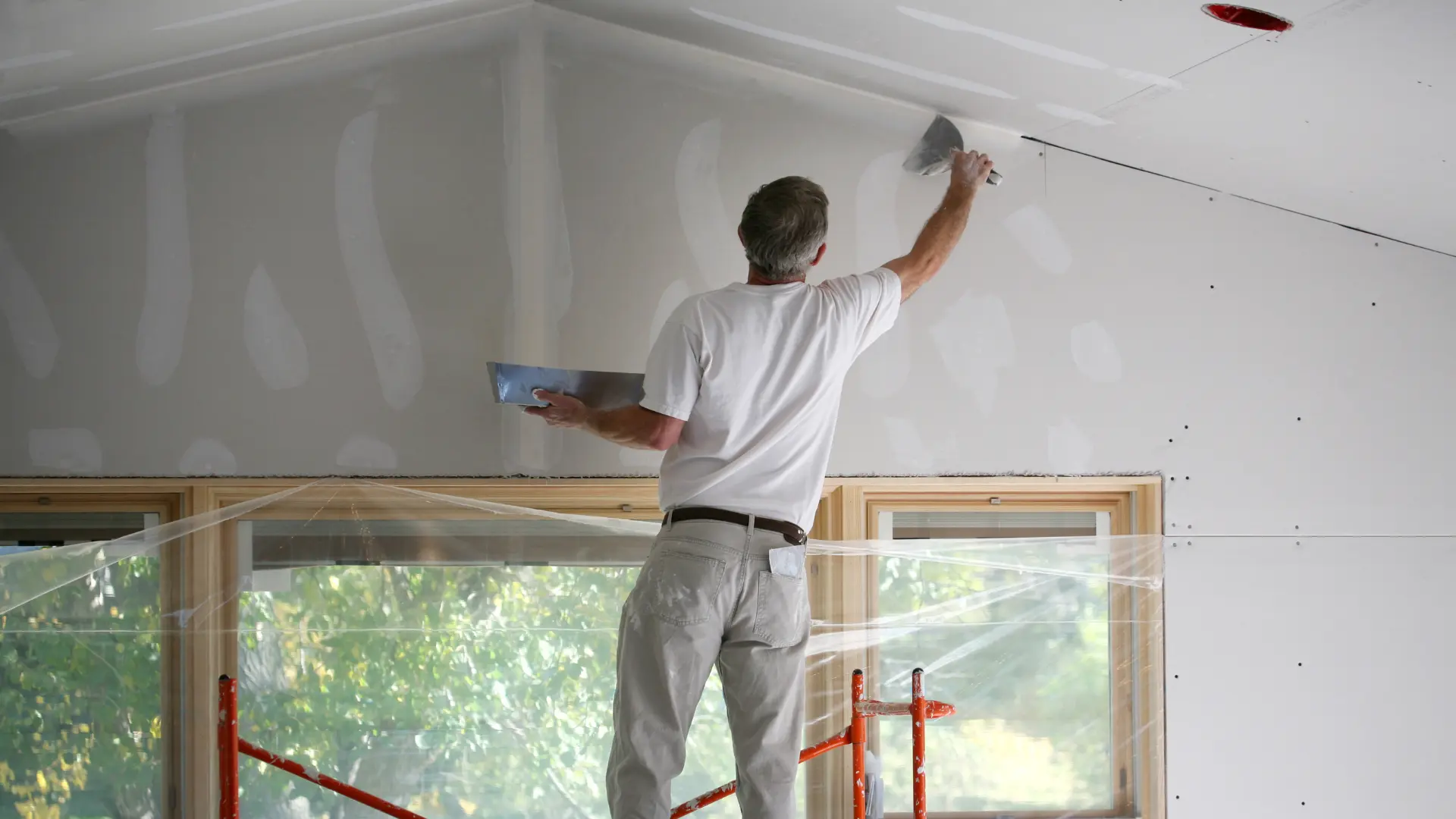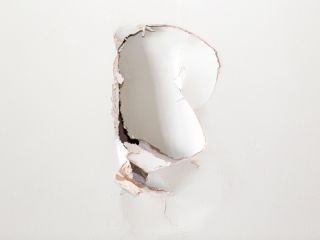A Comprehensive Guide to Mastering Drywall Fixing and Installment
This overview uses a comprehensive expedition of drywall fixing and installment, accommodating both beginners and experienced experts. It outlines vital devices, methods for patching and hanging sheets, and the critical finishing procedures. Interior Painting. By comprehending common pitfalls, people can accomplish polished results. Mastering these abilities not just boosts one's home however also builds confidence in DIY endeavors. What fundamental pointers will guarantee an effective job throughout?
Necessary Tools for Drywall Fixing and Setup
When starting on drywall repair and installation, a couple of important devices can considerably enhance the effectiveness and high quality of the job. A drywall blade, normally offered in different dimensions, is essential for using joint substance and smoothing joints. A taping knife is likewise necessary for feathering sides and making sure a smooth coating. Additionally, a drywall saw or utility blade permits for exact cutting of drywall sheets to fit any kind of room.

Step-by-Step Overview to Patching Holes
Covering holes in drywall is an uncomplicated procedure that can bring back the wall surface's look and stability. To begin, the location around the hole ought to be cleansed and any kind of loose particles eliminated. For little holes, a basic spackle or joint compound can be used with a putty blade. Larger holes may require a patch; an item of drywall can be cut to fit the hole, protected with glue or screws, and after that taped around the edges. When the spot is in place, joint compound is used over the spot and feathered bent on blend with the surrounding wall surface. After the substance dries, fining sand is essential to achieve a smooth finish. Lastly, the fixed location can be primed and painted to match the remainder of the wall. This technique assures a smooth repair, improving the overall appearance of the drywall and preserving its architectural honesty.
Techniques for Hanging Drywall Sheets
After efficiently repairing holes in drywall, the next action includes hanging brand-new drywall sheets to create a seamless surface. To accomplish this, one have to start by gauging the wall area precisely and cutting the drywall sheets to fit. It is essential to hang the sheets flat for better architectural honesty, beginning with the top and working downwards.
Using a drywall lift can simplify the process, specifically for ceiling installments. Once positioned, protecting the sheets with drywall screws at periods of regarding 12 inches along the edges and 16 inches in the area is vital. This guarantees a strong hold and lowers the threat of drooping. For corners, the sheets need to be cut to fit comfortably, enabling cleaner joints. It is advisable to stagger the joints in between sheets to reinforce the general framework, developing a much more long lasting coating prepared for the next phase in the drywall setup process.
Completing Touches: Taping and Mudding
Finishing the drywall setup involves the essential steps of taping and mudding, which ensure a smooth and polished surface. Taping calls for the application of joint tape over the seams between drywall sheets. drywall contractors. This tape can be either paper or fiberglass mesh, with each kind offering distinct benefits. After taping, the next step is mudding, where joint substance, or "mud," is put on cover the tape and fill up any kind of blemishes
Utilizing a drywall knife, the compound ought to be spread out equally, guaranteeing a feathery side to reduce noticeable adjustments. Multiple layers are typically click here necessary, with sanding in between each layer to achieve a smooth surface. Cautious interest throughout this process is necessary, as it greatly impacts the final appearance of the wall. With the ideal method and perseverance, the end outcome will be a remarkable foundation all set for paint or completing touches.
Typical Mistakes to Avoid in Drywall Projects

An additional common error is not enabling sufficient drying time in between layers, which can trap wetness and endanger the coating. Additionally, neglecting to feather the sides appropriately can produce visible lines and blemishes. Finally, avoiding sanding or using inappropriate techniques might leave rough places. By recognizing these mistakes, people can greatly boost the high quality of their drywall tasks and achieve a professional-looking finish.
Often Asked Questions
Can I Fix Drywall Without Expert Aid?
Yes, one can repair drywall without professional assistance. With the right devices, materials, and support, people can efficiently handle minor fixings. Nonetheless, substantial damages might require specialist expertise for suitable results and durability.
How Much Time Does Drywall Substance Require To Dry?
Drywall compound usually takes between 24 to two days to completely dry completely, depending upon elements such as humidity and temperature level. Thinner layers may dry quicker, while thicker applications need even more time for ideal results.
What's the most effective Kind Of Paint for Drywall?
The most effective kind of paint for drywall is typically a water-based latex paint. It provides excellent insurance coverage, resilience, and simplicity of application, making it ideal for interior walls while enabling easy cleaning with soap and water.

Just how Do I Stop Mold And Mildew on Drywall?
To stop mold on drywall, assurance appropriate air flow, control moisture degrees, make use of mold-resistant materials, and immediately attend to any type of leaks. Regular assessments and prompt removal of water damage are also essential for lasting prevention.
Is Drywall Recyclable After Removal?
Drywall is recyclable after elimination, gave it is devoid of pollutants like mold and mildew, paint, or various other harmful products. Recycling facilities can refine it right into new items, promoting sustainability and lowering garbage dump waste in building.
When beginning on drywall repair service and installment, a few important devices can significantly improve the efficiency and high quality of the work. After effectively fixing holes in drywall, the following action entails hanging brand-new drywall sheets to develop a smooth surface. Finishing the drywall installation entails the crucial actions of taping and mudding, which assure a sleek and smooth coating. Accomplishing a polished finish in drywall tasks can be tough, and several common blunders can undermine the top quality of the work. Yes, one can fix drywall without specialist help.